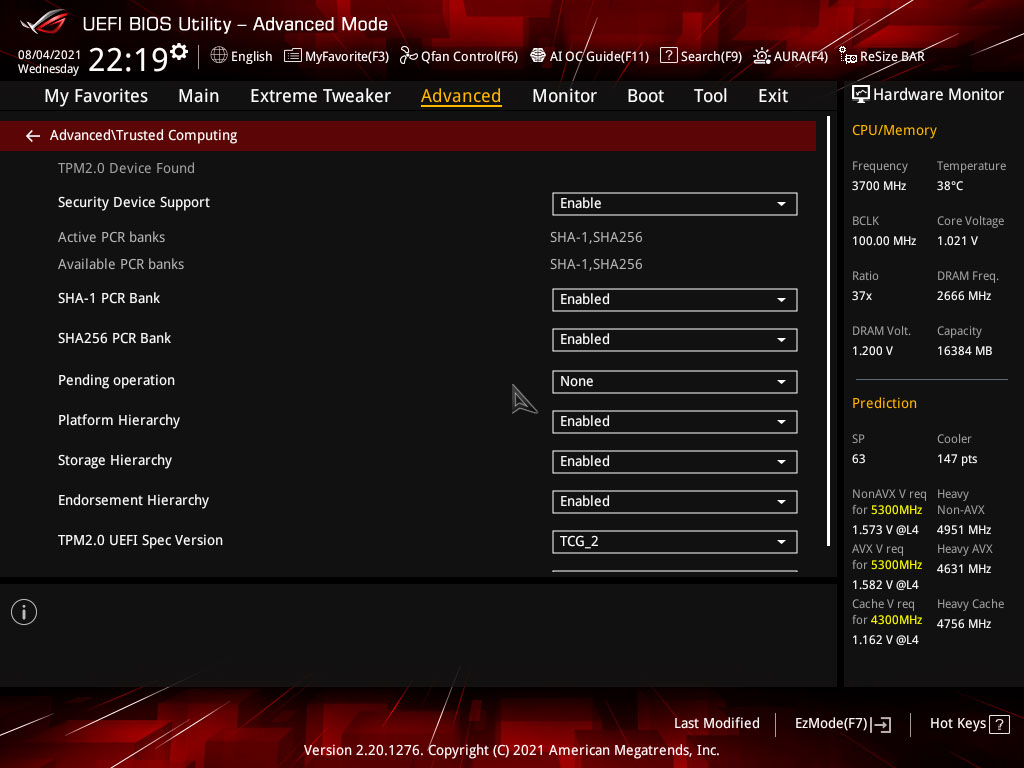Asus Releases First Windows 11 Motherboard BIOS Update
The final build of Windows 11 hasn't launched yet, but Asus didn't waste any time in preparing its motherboards for Microsoft's next-generation operating system. The motherboard manufacturer recently deployed new firmware for multiple Intel motherboards to welcome Windows 11 with open arms.
One of Windows 11's most controversial requisites is the hard requirement for Trusted Platform Module (TPM) 2.0 support, locking out millions of old motherboards that don't support the feature. TPM 2.0 debuted back in 2015, so it's safe to assume that motherboards that came out after 2015 should support TPM 2.0. Unfortunately, some motherboards shipped without the feature enabled.
Asus' firmware deployment plan is unknown, but the majority of the Asus' ROG motherboards have received the new firmware, including some models from the Prime series. So it shouldn't be long until the other series get theirs. Obviously, the firmware version number will vary from motherboard to motherboard.
Windows 11 support arrives for Intel 500-series, 400-series, and 300-series motherboards. AMD's 500-series, 400-series, and 300-series motherboards are on the list as well. Asus already confirmed in a FAQ that Intel 200-series and prior motherboards aren't compatible with Windows 11. In fact, the vendor discourages owners from purchasing a TPM 2.0 module for their motherboards since it may not work.


Asus didn't provide a detailed changelog of what exactly it changed in the new firmware. The only clue that we have to go on is the short and concise description of the firmware, which claims to "support WIN 11 installed or upgraded." We updated our ROG Maximus XII Apex motherboard's previous 2201 firmware to the latest 2301 firmware with Windows 11 support to investigate the matter.
For starters, Intel's Platform Trust Technology (PTT) is still disabled by default. Even on the latest firmware, you still need to manually go inside the motherboard's BIOS and enable the PTT option if you plan to upgrade to Windows 11 or install a fresh copy of the operating system. For those that are not familiar with the term, PTT essentially supports the same security protocols as TPM, but without the need for a physical module.
Enabling PTT will unlock a plethora of security-related options for you to play with. We compared the default settings from both the 2201 and 2301 firmware and didn't find any dissimilarities. Whatever Asus had planted inside the new firmware remains a mystery.
Get Tom's Hardware's best news and in-depth reviews, straight to your inbox.

Zhiye Liu is a news editor, memory reviewer, and SSD tester at Tom’s Hardware. Although he loves everything that’s hardware, he has a soft spot for CPUs, GPUs, and RAM.
-
ThatMouse Does Microsoft know there's a world wide chip shortage that isn't going away anytime soon?Reply -
InvalidError Reply
It shouldn't be a problem: Windows 10 support isn't ending until 2025 at the very least and the bunch of new or upgraded fabs coming online in 2022-2024 should substantially increase supply across the 2-7nm range. By the time Windows 10 support ends, 200-series motherboards that lack integrated TPM 2.0 support will be 7+ years old, well on their way to retirement as daily-use computers.ThatMouse said:Does Microsoft know there's a world wide chip shortage that isn't going away anytime soon? -
mikeebb FWIW, I have a MSI Z490 motherboard that, when the fTPM and Secure Boot were enabled, flew right through the MS compatibility "health" checker when it was briefly available. No problem. So it's very possible that some slightly older (10th gen Intel in mine) computers will work with some BIOS settings. Just try it - enable the TPM, reboot back into the BIOS, then enroll the Secure Boot keys and enable Secure Boot. Reboot again, Windows 10 will be perfectly happy with it, and if you find a Win11 checker it probably will be too. BTW, in my case, the clean bill of health included working fine with a GTX 750ti GPU. That doesn't mean I'll volunteer for Win11 - there are certain things I really don't like about it, but assuming enough of it gets fixed I will probably move before Win10 goes out to pasture in 2025.Reply